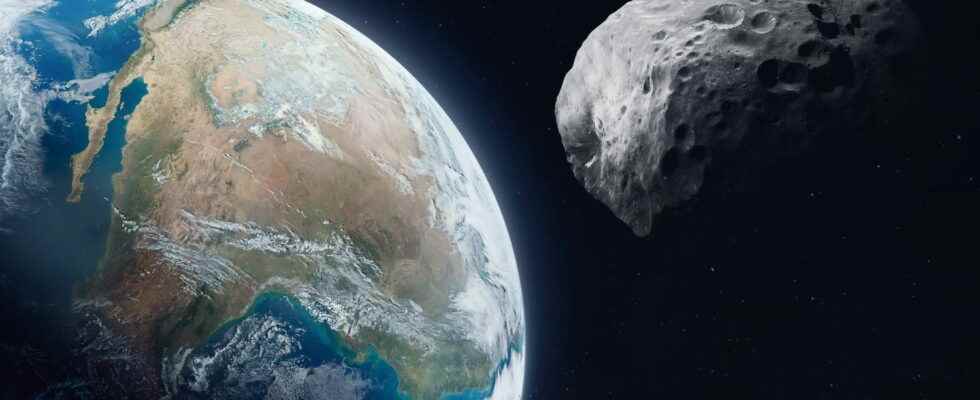2023 BU, a bus-sized asteroid, skimmed past our planet just a few thousand miles overhead on the night of January 26, 2023.
[Mis à jour le 27 janvier 2023 à 10h37] Thursday, January 26, 2023, our planet crossed paths with an asteroid named “2023 BU”. About the size of a bus and traveling at a speed of about 32,400 kilometers per hour, it stood out above all for the short distance that separated it from the Earth.
Indeed, 2023 BU approached closest to the southern tip of South America around 00:29 GMT, at a distance of 3,600 kilometers from the surface of the Earth ! It was “one of the closest approaches by a near-Earth object ever recorded,” exclaimed Davide Farnocchia, navigation engineer at the Jet Propulsion Laboratory (JPL).
It was an amateur astronomer who spotted the object from an observatory in Crimea a few days before its passage. If it did not present a threat to the Earth, the asteroid did on the other hand constitute a great opportunity for astronomers since it was easily observable thanks to its close proximity. Indeed, 2023 BU evolved low enough to be visible using a telescope from France on the evening of January 26.
Was asteroid 2023 BU dangerous?
Asteroid 2023 BU passed extremely close to Earth on Thursday, January 26. Before his passage, the NASA explained that there was no risk of collision between this object and our planet. Although the distance that separated it from Earth was small, the asteroid was still too far away to cause any damage. On the other hand, with a maximum size of about 8.2 meters in diameter, it would not have survived crossing the Earth’s atmosphere. Even if it had come straight at us, which it didn’t, it would have come apart long before it hit the ground.
How far is asteroid 2023 BU from Earth?
Evolving only 3,500 kilometers from Earth, the asteroid was very close to us astronomically speaking. Indeed, our communication satellites were located at an altitude of 36,000 kilometers. 2023 BU therefore went much lower than the latter. It was the first time in 300 years that an asteroid passed so close to Earth.
This short distance allowed astronomers to study the asteroid as it passed our planet. Astronomy enthusiasts equipped with a telescope were also able to admire the spectacle.
What is an asteroid?
An asteroid is a celestial object having an orbit around a star. It is made up of rocks and metals and is a real witness to the formation of the solar system. Indeed, the generally accepted theory is that asteroids are rocky fragments that would not have agglomerated to form planets.
In the solar system, these objects come from the main asteroid belt between Mars and Jupiter, which contains hundreds of thousands of them. Scientists suspect that Jupiter prevented the formation of a planet in this area because of its gravitational force. The asteroids are thus embryos of this planet which never saw the light of day.
In the asteroid belt, these pieces of rock orbit the Sun. However, it happens that their trajectory is deviated by the force of gravity of a planet like Mars or Jupiter. They then find themselves leaving their initial orbit and can thus cross the Earth’s orbit: they are then called NEOs.
The visibility of an asteroid depends on many parameters such as the distance that separates us from the object or its size and its position in relation to the Sun. Some relatively rare asteroids are visible to the naked eye as they pass close to our planet. For others, you will need a pair of astronomy binoculars or a telescope to enjoy the show.
For the curious, NASA has posted a tool which makes it possible to follow the trajectories of different celestial objects such as asteroids, but also comets. You will be able to stay on the lookout for these space visitors.
